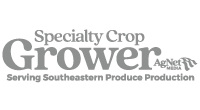Almond growers seeking effective disease control solutions have a new option to consider. Axios 20SC, a fungicide powered by quinoprol, offers flexibility, low use rates, and the benefits of an EPA-reduced risk classification, according to Cassandra Rieser, a technical service manager for UPL covering Southern California and Arizona.
Rieser emphasized that when selecting a fungicide, growers look for several key factors, including performance, tank compatibility, and application flexibility. They also consider whether a product is curative or preventative, systemic or contact-based, and whether it covers bloom or summertime diseases. Additionally, short pre-harvest intervals (PHI), residue limits, and resistance management are critical concerns.
Resistance management, in particular, remains a major issue across nearly all almond orchards. Growers must rotate chemistries to prevent fungicide resistance and maintain long-term effectiveness.
One of Axios 20SC’s standout features is its classification as an EPA-reduced risk pesticide. According to Rieser, the U.S. Environmental Protection Agency (EPA) grants this designation to products that pose lower risks to human health and the environment compared to older conventional pesticides. This means improved safety for workers handling the product and fewer environmental concerns.
“Having this feature can help keep new conventional pesticides in a farmer’s toolbox for disease control for much longer,” Rieser said.
Axios 20SC provides control for both bloom-time and summertime diseases, making it a versatile option for almond growers. With a 14-day PHI, it offers growers the flexibility to incorporate it into their spray programs throughout the season, helping to fill gaps in disease control strategies.
For more information, growers can contact their local UPL territory sales manager or visit UPL’s website.











